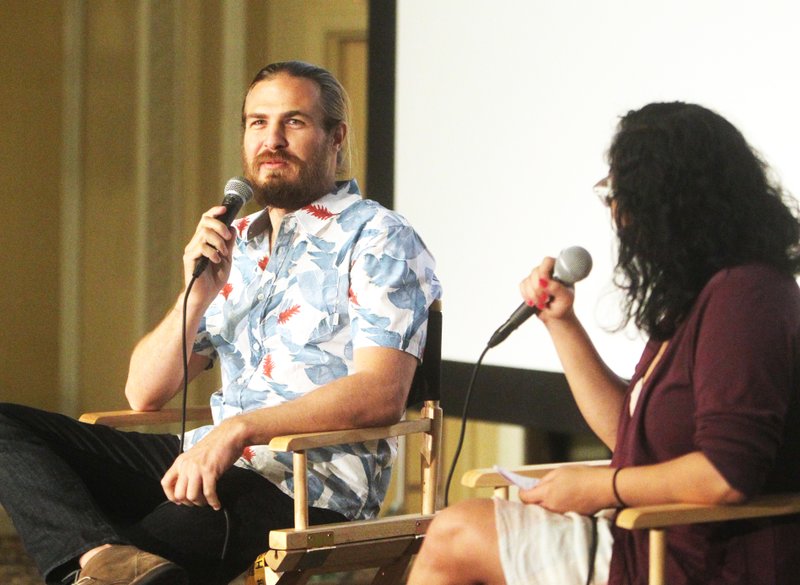A cinematographer for one of the films in this week's 26th annual Hot Springs Documentary Film Festival explained Tuesday how filmmakers develop bonds with the subjects of their work.
"Out of State" cinematographer Chapin Hall discussed work on the film after its Tuesday morning showing at the Arlington Resort Hotel & Spa. He said almost 400 hours of footage was compiled over the course of five years.
"One of my mentors always told me you sort of end up falling in love with your subjects," Hall said. "You have to, whether they are good people or not, to keep going, to tell a story and to do your best for them."
It took two years for the makers of the film to gain access to Saguaro Correctional Center in Eloy, Ariz., to begin work on the documentary. Much of the film follows two Native Hawaiians during their incarceration and reintegration back into society in their home state.
"The prison was extremely worried that if we shot all with one person that the person would become a target for retribution from other inmates," Hall said. "There's a lot of other things that get in the way. Prison is a hard place to make a movie."
Saguaro is a private prison for male inmates built in 2007 contracted exclusively with the Hawaii Department of Public Safety to house overflow inmate population. The number of Hawaiian inmates increased by about a fifth between 2000-2008.
Male inmates were consolidated into one prison with more than 1,900 beds after they were previously distributed to three facilities in three different states. More than 100 inmates, including the film's two subjects, are regularly part of a program in which they participate in traditional Native Hawaiian religious ceremonies, learn the language and form a community.
Hall said the crew routinely adjusted their expectations for the film. He said they only planned to shoot footage inside the prison until one of their subjects informed them he would be released on parole.
The distance from Hawaii to Arizona further complicates the inmates' incarceration and the lives of their families. Hall said it can be easy to feel like they deserve the ramifications until you see what they and their families experience.
"In many ways, the victims of the crimes are not the only victims," Hall said. "Their families are also their victims.
"They are also the victims of their own choices in life. It is definitely a spiral. It is very difficult to get out of."
The film proved to be logistically difficult to shoot before and after the main two subjects returned home to Hawaii, which also occurred at different times. To maintain the film's authenticity, the crew did not use tripods, lighting, directions or other equipment and methods.
"We found early on that with a main character with a face tattoo and the kind of weirdness of the subject that anything you do to manipulate it feels manipulative on-screen. We had to strip away all of our tools," Hall said.
"If he started talking, that was where the interview happened and then we made the best of it. It just felt strange any time we did anything to it."
Hall said it was important for Hawaiian native Ciara Lacy, in her directorial debut, not to glorify their circumstances without sugarcoating or whitewashing the subject matter, either. Filming was often delayed due to real-life events.
"It is what it is," Hall said. "Hawaiian people are struggling, and not all of them, but there is a large percentage of them that are having trouble. We live in a very expensive place. You cannot drive to another state. It is expensive to even pick up your family and move some place else."
Hall praised Lacy's work as a filmmaker. He said she saw the film as a male topic and was unsure if she was the best fit to lead it and interview the subjects.
"She said one of the things that took a lot of time for her to realize was that her gender in this film and being the director of this was actually a superpower because they would talk with her and bond with her in a way that they couldn't or wouldn't with other men," Hall said.
Lacy and other members of the crew continue to spend additional time with the subjects. One of the former inmates was able to travel to California in June for the film's world premiere at the Los Angeles Film Festival.
"Out of State" will make its Hawaii premiere next month in the documentary competition section of the Hawaii International Film Festival. Hall said the film will be shown on Public Broadcasting Service in the future, but no air date has been announced.
Local on 10/11/2017